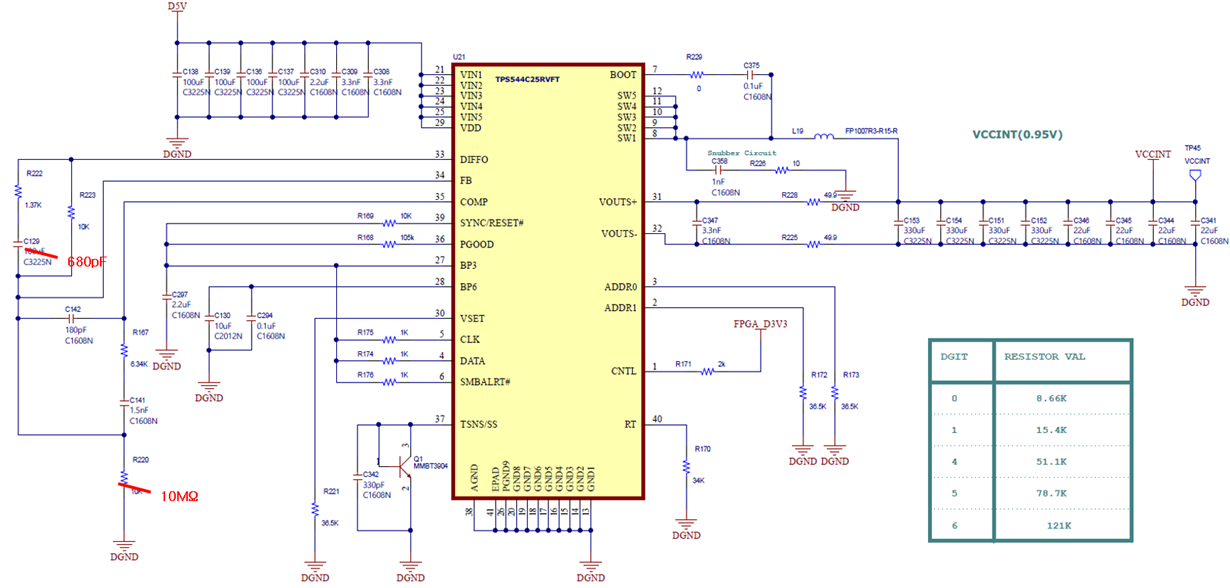Hello
I am using a TPS544C25RVFT regulator, but the power output is strange.
Looking at the capture screen, a square wave is output based on 0.95V.
Shouldn't 0.95v be output linearly?
The circuit is designed like a capture screen.
Please let me know if there is something I am missing



